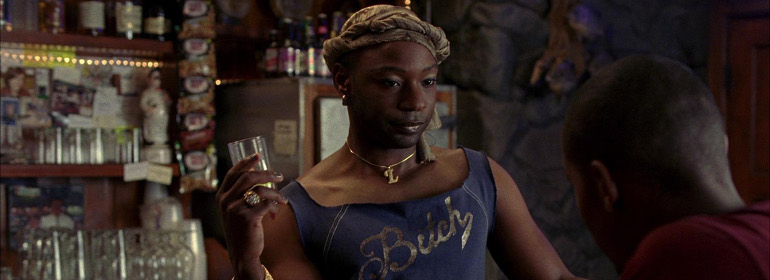There was a time, gentle reader, when LGBT representation on TV was restricted to offensive stereotypes: the campy sex-pest, the angry lesbian, the greedy bisexual etc.
Thankfully things have move on a bit and now there’s a wealth of well-rounded queer characters out there in TV land to love (and loathe).
So, we’ve selected some of the best ones appearing on your TV screens over the past 2 decades.
Omar Little, The Wire
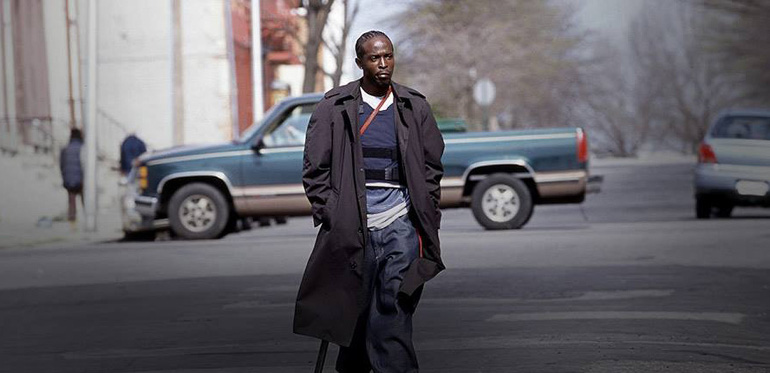
Without a doubt one of the stand-out characters in a stand-out show. Fierce and fearsome Omar (played by Michael K Williams) is a Robin Hood-esque stick-up man who relieves Baltimore’s drug dealers of their wares.
But Omar has morals; he may steal dealers’ money, but he doesn’t sell drugs, instead using them to bribe the city’s many crack addicts into providing him with safe-houses.
When the corner thugs hear Omar approaching, whistling his trademark tune ‘Bringing in the Sheaves’, they either hand over their drugs or sprint for cover. It’s clear to the audience before he appears on screen that Omar is not to be trifled with.
He is also openly, unapologetically gay. This irks his enemies no end (foremost amongst them gang honcho Avon Barksdale, who solely refers to him as “The Faggot”).
The torture and murder of his boyfriend Brandon at the hands of Avon is what motives him to exclusively target the Barksdale gang, and provides much of the drama during the show’s first series. Omar takes on the most powerful drug gang in West Baltimore, and effectively wins – all as revenge for his murdered lover.
The reason for Omar’s brilliance lies in the fact that he seems entirely comfortable with himself, despite constant abuse and widespread disdain because of his sexuality. But at no point does he seem conflicted or burdened by others’ opinions of him.
The contrast between Omar’s macho, masculine ‘career’ and his moralistic nature (he never swears, is kind to animals and never attacks those who aren’t in “the game” ) add layers to this multifaceted character.
Omar is the tender and the terrible in one scarred package, and possibly one of the best queer characters of all time. Even President Obama loves him, citing Omar as his favourite character on the show.
Todd Chavez, Bojack Horseman
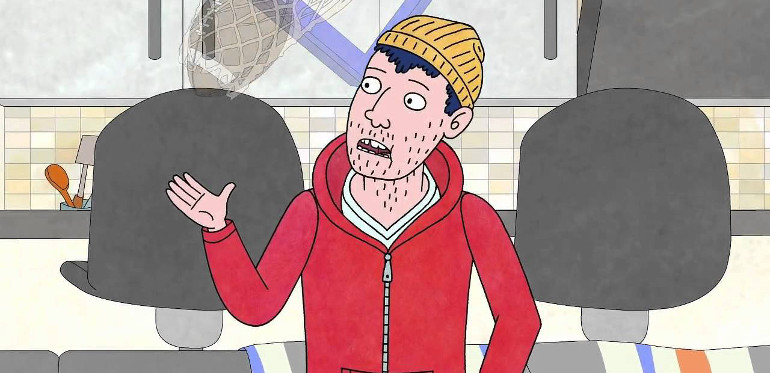
Among the many unexpected happenings in the criminally-underrated third season of Bojack Horseman was the revelation that Bojack’s side-kick and unwanted houseguest Todd identifies as asexual.
In season 3, Todd runs into Emily a former one-sided love interest from his past who continues to pursues him romantically. To the viewer, it’s painfully clear that Todd isn’t interested. Like, at all.
The action flashes back to the couple’s sorta courtship as teens in 2007 (wonderfully soundtracked by this note-perfect parody). During a game of ‘Seven Minutes in Heaven’ (a party game where hormonal teenagers are locked into a hot press and not released until they’re suitably sweaty and embarrassed), a clueless Todd blithely blags Emily’s advances.
Back in the present, after much sorta-but-not-exactly-flirting, Emily eventually asks what Todd’s “deal” is. He confesses that he is neither gay or straight. “I might be nothing,” he tells her.
Perhaps the most surprising thing of all is that this revelation isn’t played for laughs – it’s just an honest moment, in a series that continues to impress. Emily, a typically non-plussed millennial, is supportive of Todd and it’s all kinds of adorable. Seriously, if you haven’t seen Bojack, get on it.
Is Todd the first asexual-identified cartoon character ever? Possibly. Characters like Sherlock Holmes and to a lesser extent (since he technically has a girlfriend) Sheldon from The Big Bang Theory may have a distinct lack of interest in romance or sex with anyone, but Todd is a self-identified asexual. And he seems totally fine with that. Hooray!
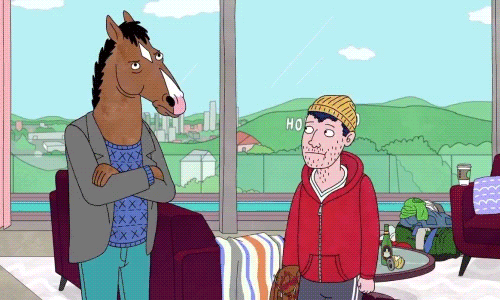
Lafayette Reynolds, True Blood
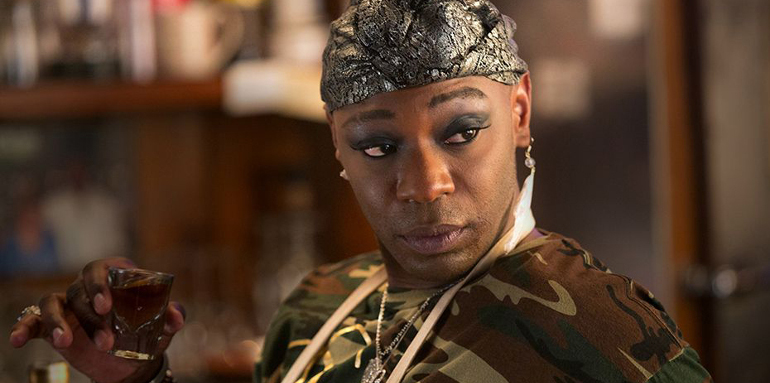
“Who ordered the Aids burger?” Lafayette’s challenge to a homophobic customer at Merlotte’s diner in the 5th episode of season 1 of the HBO series, sets out the stall for his character: unashamed, unapologetic and uncowed by homophobic Louisiana rednecks who might take exception to him.
Flamboyant and flirty, Lafayette is a master of pithy put-downs, all delivered in his gravelly bass and served with the succotash at Merlottes. But there is a sensitive, wounded side to Lafayette seen in his interactions with eternally-imperilled cousin Tara and lovely boyfriend Jesus.
After being taken hostage and tortured by sexy Scandinavian Eric Northman in season 2, poor Lafayette suffers from severe vampire-related PTSD and becomes a gibbering wreck.
And did I mention he’s also a medium? In a particularly moving (and spoilerific, so look away now if you’ve not seen season 4) end to season 4, insane, recently-deceased witch Marnie (played by Fiona Shaw) possesses Lafayette and forces Jesus to transfer his powerful demonic ‘brujo’ magic into Lafayette’s body, killing Jesus in the process.
When Marnie’s spirit is finally ejected from Lafayette, he has to face having killed his true love. Some sad stuff, wonderfully acted by Nelsan Ellis.
Trivia alert: In the Sookie Stackhouse book series upon which True Blood is based, Lafayette is killed off relatively early (in book two). In True Blood, he is one of the rare survivors, lasting all the way up to the final episode.
Agron, Spartacus
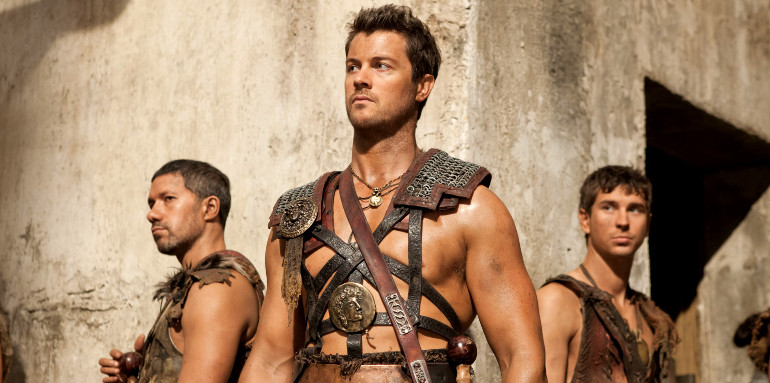
There are no deep and meaningful conversations about being gay or the difficulties of conducting a homosexual relationship amidst the muscular, macho environment of the gladiator’s ludus. Agron and former ‘body slave’ Nasir fall for each other and become a couple with almost no mention of it made by any of the others.
In the first season of the show Teutonic Agron (“from the lands north of the Rhine”) and brother Duro are captured by the Romans in battle and forced into gladiator training alongside Spartacus.
After the death of Duro, Agron dedicates himself to his new brothers and when Spartacus kicks off his famous rebellion, Agron loyally follows, hacking Roman hordes apart along the way.
Agron’s fiery rage against the Romans for the death of his brother continues unabated until he encounters Nasir, (a ‘body slave’: responsible for the personal grooming of their master or ‘dominus’). After a brief flirtation (which in Spartacus involves discussion of the best ways to disembowel Romans) and a near-death incident, surly Agron admits his feelings for Nasir and the two share a tender kiss. Amid the violent, OTT gore which is the trademark of the show, this moment is something special.
In the show – which centres on the lives and subsequent rebellion of gladiators slaves – the freedom to love whomever one wishes is at the heart of the characters’ struggle for manumission. This is why ‘Nagron’ are such a sweet couple, as well as a firm fan favourite.
Poussey Washington, Orange is the New Black
[This post contains possible spoilers for Season 4]
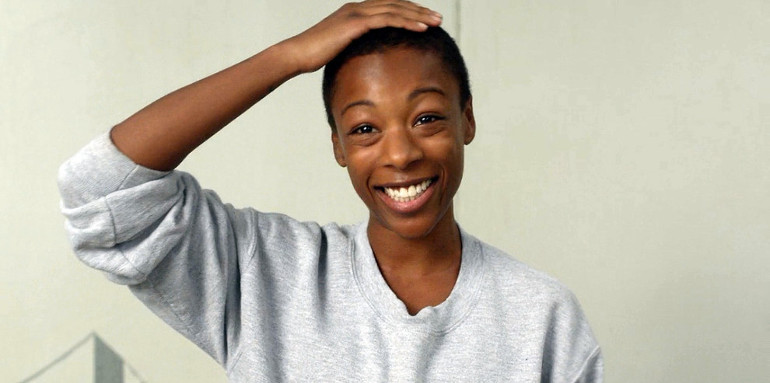
Oh, Poussey. I can scarcely type your name without crying out ‘Whyyy?’ or more pertinently ‘Why wasn’t it Piper?!” Still, sadness aside Poussey Washington was a chirpy little figure, brewing illicit hooch and flashing her Hollywood smile all over Litchfield’s Ladies Correctional.
Self-confessed “military brat” Poussey really hit her stride in season 2 during the reign of evil Vee. Despite Vee’s many attempts to intimidate her – which include having Crazy Eyes beat the smile off her face – Poussey remains free of Vee’s nebulous influence.
Her (unrequited) feelings for BFF Taystee are explored and gently rebuffed before she finally finds love in Season 3 with extremely annoying, but admittedly attractive, Soso. Together the two make an adorable couple.
A little too adorable…
…And when a character is shown to be exceedingly happy or hopeful, it’s usually a safe bet that something EPICALLY tragic is about to happen to them. Such is the fate of poor Poussey, whose death harkens to real life events beyond the walls of Litchfield. Gentle, tiny Poussey is crushed to death by a well-meaning but inept, inexperienced guard during an incident in the prison.
What plays out is a microcosm of the plight of many African-Americans, whose bodily liberty is subject to violence and violation by the police and penal systems. An innocent woman is killed, accidentally, and then left to rot in the prison’s canteen for days while the authorities figure out ways to defame the victim and frame the incident as a case of justified homicide.
A tragic ending for one of OITNB’s most beloved characters. RIP, Poussey.
Jeremy Usbourne (Peep Show)

Anyone familiar with Jesse Armstrong and Sam Bain’s utter classic Peep Show will know that failed musician and inveterate slacker Jeremy Usbourne is a ladies’ man. This clip adequately captures his enthusiasm for women.
In the show’s first season, stuffy loan manager Mark develops a crush on alpha business shark, Alan Johnson. Despite efforts to explore these new feeling by purchasing bargain bin gay porn from the corner shop, Mark ultimately arrives at the conclusion that he is “bi, but basically un-curious”.
And with that, Peep Show’s two protagonists Mark and “work-shy freeloader” Jeremy continue to chase woman (Mark forever chasing “the one” while Jez chases literally any one) exclusively for the next 7 seasons. Well, apart from the time they kiss each other during a game of dares (to impress women), and that time when Jez accidentally becomes a “handy” man for his idol Russell ‘The Orgazoid’ in season 4.
UNTIL, in episode 2 of season 9 when newly-conferred life-coach Jez encounters Joe, the boyfriend of one of his clients. Jeremy notes a “weird atmosphere” between them. When Joe shows up at Mark and Jeremy’s flat later that night, it becomes pretty clear that the “weird atmosphere” is sexual tension and so they sensibly attempt to dissipate it by having sex.
Afterwards Jeremy explains to Mark that having sex with a man is “like getting your car fixed at the actual dealership – they know all the codes.”
When Mark tries to pin Jeremy’s sexual orientation down (“so if you had a wikipedia page…would it say ‘Jeremy Usbourne – ‘gay’ or ‘straight’?”), Jez answers in true Jeremy style. “I don’t fit into your tiny little boxes,” he tells Mark. “I ‘m just trying to find that sacred connection and for that, I’d fuck any single member of the human race.”
“I live with a gay couple,” thinks Mark. “It’s politically correctness gone normal.”
Sophia Burset (Orange is the New Black)

It is a testament to the quality of OITNB’s writing that this list contains not one, but two of its characters. Laverne Cox plays the upbeat Sophia Burset, sent to Litchfield Penitentiary after being convicted of credit card fraud.
Snippets of Sophia’s backstory parcelled out through the series eventually reveals the truth behind her incarceration; she stole the credit cards to help fund her gender reassignment surgery.
Sophia’s wife eventually comes to terms with her spouse (formerly a firefighter named Marcus)’s transition but son Michael is slower to accept it. It is revealed that Michael, angry and confused at his father’s transition is the one who rats his father out to the police.
In the earlier seasons of OITNB, Sophia encounters relatively little transphobia (relatively little in this case meaning only verbal abuse), as her fellow inmates accept her as her identified gender.
However in Season 3, an incident involving their sons leads to a dispute between Sophia and latino leader Gloria. After she accidentally receives a black-eye from Sophia, Gloria begins spreading transphobic rumours about her, eventually leading to a boycott of Sophia’s hair salon.
Afterwards, she becomes the target of harassment and is attacked by a number of inmates. When she threatens to sue the prison, she is sent to the SHU (Secure Housing Unit) “for her own protection.”
She remains here for the rest of season 3 and the vast majority of season 4, languishing in obscurity and deprived of her dignity (and her wig).
She is finally released in ‘The Animals’, she discovers that her salon has been taken over by bad girl Ruiz’s drug gang. Happily, Gloria – wracked with guilt over her treatment of Sophia – ejects the gang and even returns Sophia’s wig to her as an act of penitence. Aw.
Willow Rosenberg, Buffy

It may be 13 years (!) since the final episode of Buffy aired, but Willow Rosenberg (perfectly played by Alyison Hannigan, later of “this one time, at band camp..” fame) remains one of my favourite TV lesbians of all time.
Although she started as heterosexual (didn’t we all, though?) dating fellow red-head and werewolf Oz during the show’s earlier seasons, by the time the Scoobies go off to college Willow is ready to free herself of the shackles of heteronormativity. After deciding to explore witchcraft further she joins an on-campus Wicca group and there she meets super-shy Tara.
The episode where the couple get together (‘Hush’) is only one in the entire series to be nominated for an Emmy Award in Outstanding Writing for a Drama Series.
In ‘Hush’, a group of terrifying ghouls called ‘The Gentlemen’ steal everyone’s voices, rendering them unable to scream when The Gents cut out their hearts. Bummer. All the characters are forced to communicate non-verbally while they seek a way to defeat the bad guys and recover their voices.
In a seriously adorable scene, Tara (following an aborted earlier attempt to connect with Willow during a Wicca session) and Willow find themselves locked in a laundry room together, silently wracking their brains for ways to save themselves from the approaching Gents.
When Tara sees Willow unsuccessfully trying to use her witchy, telekinetic powers to barricade the door, she clasps Willow’s hand and together they manage to move a heavy vending machine against the laundry room door. In this moment, the symbolism is obvious: together, we are strong.
The next day, when everyone’s voice is returned, Tara tells Willow she is special and so begins Buffy: The Vampire Slayer’s sweetest romance.
When Tara is killed by a stray bullet from bad guy Warren’s gun, Willow goes berserk and uses her magic to enact a well-deserved bit of vengeance by flaying off Warren’s skin before burning him alive. Haw-haw!
Despite the tsunami of fan disapproval that greeted her subsequent relationship with anti-Tara, Kennedy, following the former’s demise, Willow was one of the first of a new kind of on-screen lesbian and remains one of the best examples of a well-drawn, utterly loveable TV lesbian.
Did we miss anyone? Comment below!
© 2016 GCN (Gay Community News). All rights reserved.
